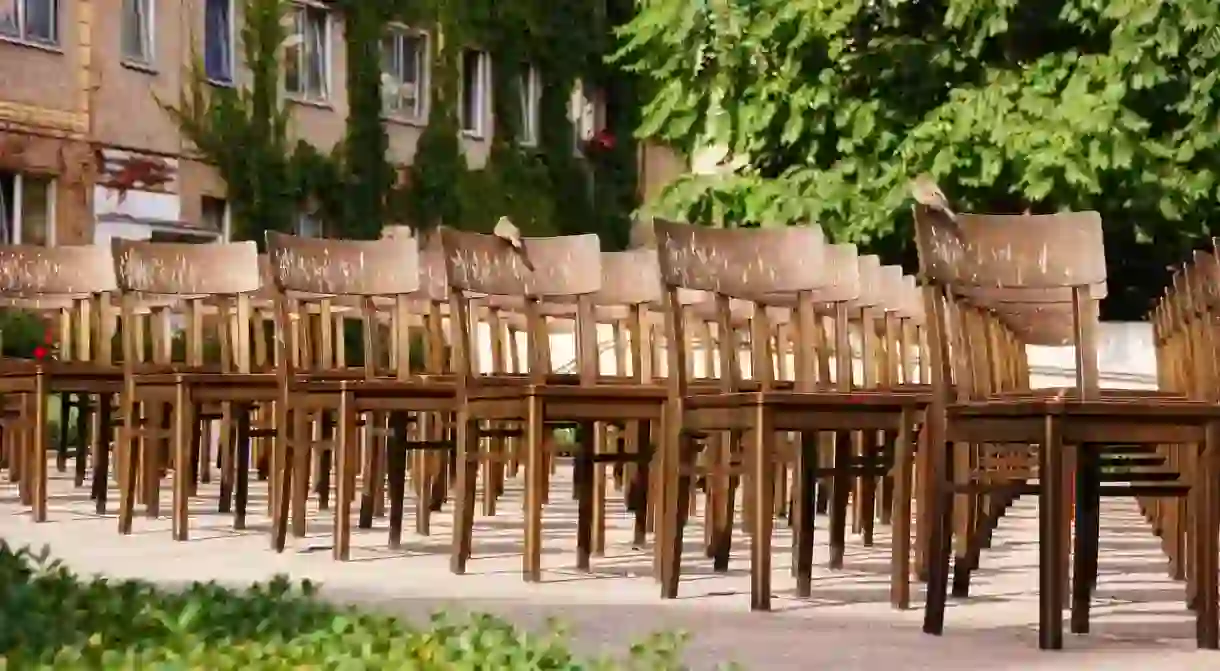Leipzig's Most Beautiful Monuments and Memorial Sites

All across Leipzig, a number of monuments and memorial sites pay tribute to some of Germany’s greatest literary and musical figures, commemorate the victims of past wars and battles, and memorialize an event that changed the course of history forever. Here are the city’s must-see monuments.
Battle of the Nations Monument
One of Leipzig’s most imposing sights is the Monument to the Battle of the Nations. Constructed to commemorate the 120,000 victims of the bloody battle against Napoléon in 1813, the giant structure soars 91 metres into the sky, making it the largest memorial in all of Germany. Stone-carved elements, inscriptions and statues embellish the peace monument whose pyramidal shape is reflected in the ‘sea of tears’, intended to represent the tears shed by the fallen victims.

Goethe Memorial
Another figure who shaped Leipzig’s cultural identity is the poet and novelist, Johann Wolfgang von Goethe. Leipzig’s city centre is studded with restaurants, cafés and public places where Goethe would go to work on his writings. A large bronze statue on the Naschmarkt Square in the heart of the Old Town depicts Goethe as a young man and student in Leipzig, wandering the streets en route to one of his favourite spots: the renowned Auerbachs Keller.
Holocaust Memorial
Across the road from Leipzig’s Modern Art Museum, 140 bronze chairs stand in rank and file, outlining the floor plan of a synagogue that was destroyed by the Nazis in 1938. The simplistic yet poignant memorial site is not much of a tourist attraction and many only accidentally pass, but the monument serves as a stark reminder of the most haunting chapter of Leipzig’s past.

Statue of Mephisto and Faust
As we’ve mentioned before, Auerbachs Keller in Leipzig’s Old Town somewhat became Goethe’s second living room during his time in the city. He loved the atmosphere so much that he incorporated the wine bar into his most famous piece of work, Faust. His character Mephistopheles chose the locale as the first place to take Faust on his travels, catapulting the real Auerbachs Keller to international fame. The Statue of Mephisto and Faust outside the restaurant pays tribute to Goethe’s literary immortalisation of the wine tavern.
Auerbachs Keller, Mädler Passage, Grimmaische Straße 2-4, Leipzig, Germany
Bach Memorial
A statue of Johann Sebastian Bach, one of Germany’s greatest composers, greets you at the main portal of St Thomas Church to recall the time when Bach led the famous Thomaskantor. Towering on a three-metre-high limestone pedestal, the statue depicts Bach in his role as the musical director of St. Thomas Church, standing in front of an organ, a piano roll in one hand, the other one raised to conduct his ensemble.

Nikolai Column
Beginning in November 1982, the plaza in front of St Nicholas Church was the scene of public prayers every Monday. The event culminated in the famous peaceful demonstrations in October 1989, which saw hundreds of thousands of people come together outside the church to peacefully protest for a unified Germany. In hindsight, the event was crucial in bringing about the fall of the Berlin Wall and the reunification of the GDR and West Germany the same year. Today, a free-standing column at the centre of the square commemorates the peaceful demonstrations.
St. Alexei’s Russian Memorial Church
Exactly 100 years after the Battle of the Nations, construction of the St. Alexei’s Russian Memorial Church was completed in 1913 to commemorate the 130,000 Russian soldiers who had joined the fight against Napoléon. The tent-shaped roof was modelled on Moscow’s Church of the Ascension and crowned with a gilded onion dome that towers over the southern end of Leipzig’s Friedenspark.














